Choosing a sponge for cleaning
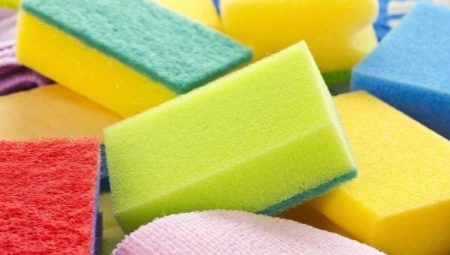
A sponge is an important device that you cannot do without when cleaning a room. Manufacturers offer a wide range of such cleaning accessories: they differ in materials of manufacture, size and purpose. It is important to choose a quality product that will last a long time and will not deteriorate after the first use.
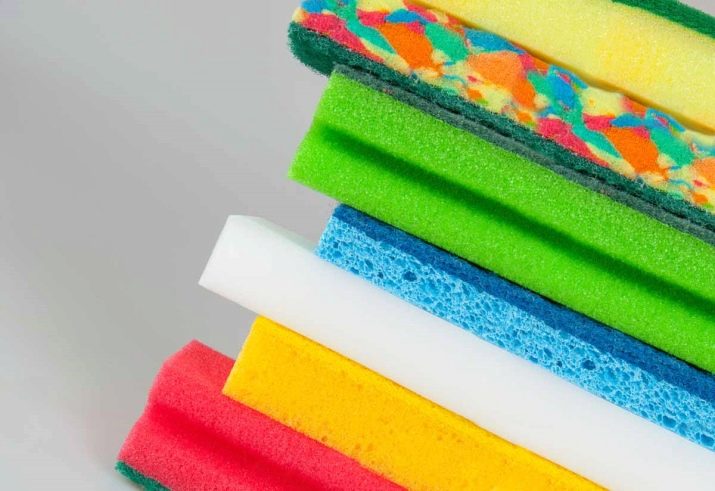
Peculiarities
To maintain order in the apartment, there are not enough detergents, cleaning agents and disinfectants. In everyday life, you cannot do without a cleaning sponge. Such accessories have a number of advantages.
- Sold in a wide range. On sale there are sponges for dishes, for plumbing, for the care of furniture and interior items. The range of prices for them is huge: in stores you can find both inexpensive options and high-quality solutions at a higher cost.
- Ease of use. Most sponges are universal: they are suitable for cleaning tiles, stove and oven, countertops, headsets, mirrors, window frames and glass. They are indispensable for dedusting household appliances, electronics, upholstered and cabinet furniture.
- Ease of use, the ability to use with any kind of detergents and cleaners.
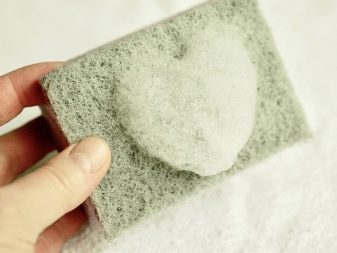
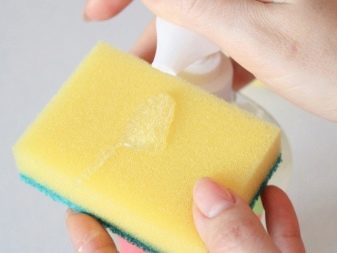
The disadvantages include the rapid wear and tear of low-quality products.
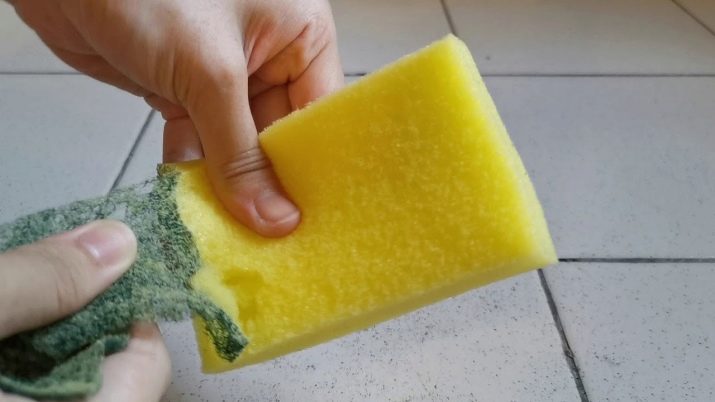
Views
Cleaning sponges are classified depending on the material of manufacture, shape and size, purpose. Let's consider each type in more detail.
By material of manufacture
There are several types of sponges.
-
Foam rubber. This is the most common type of accessories that everyone has in their home. Most often they are used for washing dishes and plumbing.Thanks to their porous structure, they foam well, regardless of the type of product used. Foam sponges absorb moisture well and are inexpensive. Their disadvantages include rapid wear and tear (most of them become unusable after 1-2 weeks of intensive use).
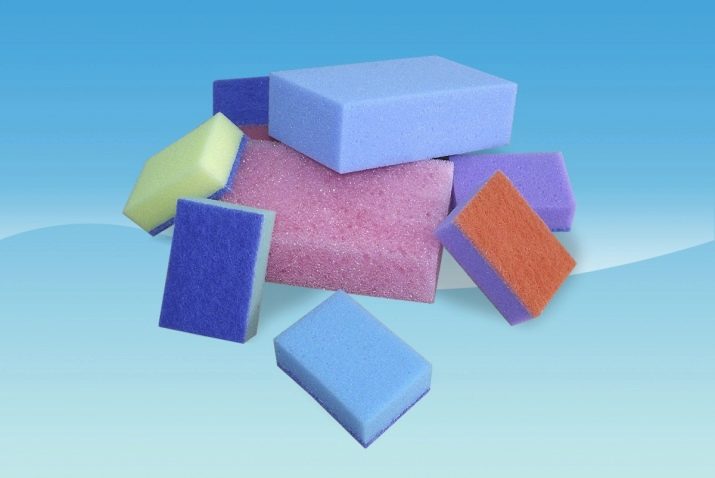
- Abrasive. Their main feature is the presence of a hard surface. They easily deal with stubborn and dried dirt on dishes, stove and hob, oven, household appliances. Abrasive sponges are versatile, easy to use, remove old stains well, but quickly deteriorate. They should not rub surfaces that are sensitive to mechanical stress.

- Metallic. Such products look like a loose skein made of thin soft metal wire. They are suitable for the maintenance of surfaces that can withstand intensive cleaning. Metal sponges quickly remove stubborn grease and burnt food. When using them, you need to be careful, as such accessories can leave scratches and scuffs.
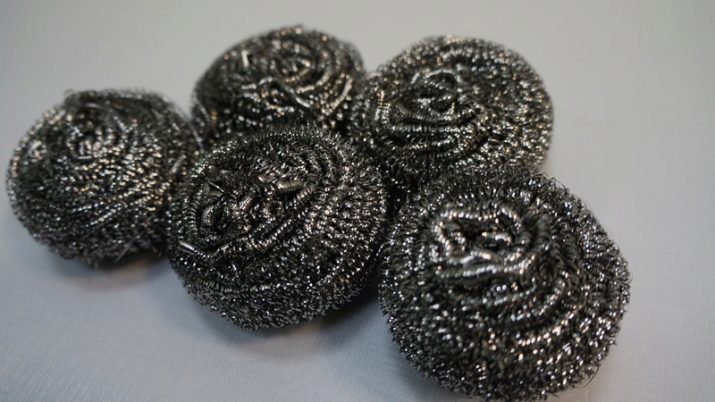
- Cellulosic. The products are made of viscose, an environmentally friendly fiber, they have antibacterial properties. Resistance to wear, the ability to quickly absorb moisture, versatility, durability are the main advantages of cellulose sponges. Their only drawback is the high price. The purchase of such cleaning accessories will cost more than a simple foam, metal or abrasive sponge.
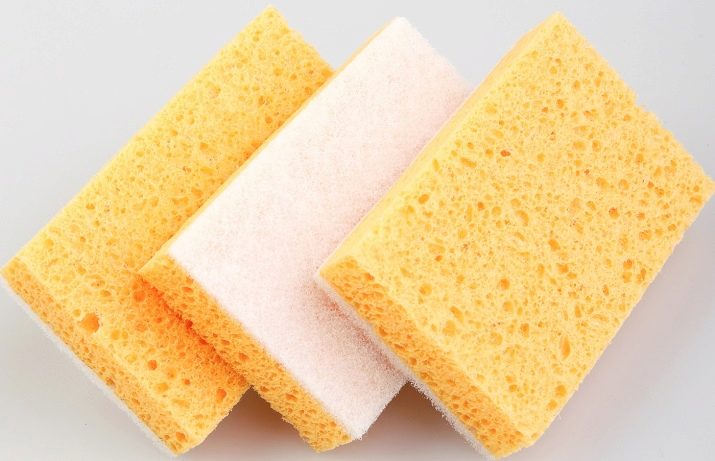
- Plastic. An accessory looks like a washcloth for a shower. It does a good job of removing stubborn stains without scuffing or scratching (unlike a metal sponge). The products are inexpensive, but at the same time they practically do not absorb moisture, are unable to form foam and quickly require replacement.
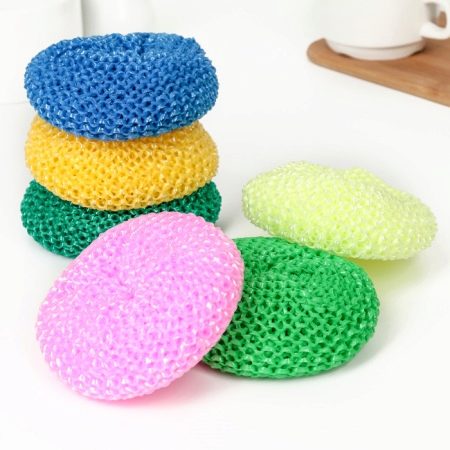
- Bamboo. Bamboo sponges do not cause allergies, they gently clean delicate surfaces, do not absorb foreign odors. Such a product washes dishes without means. Its disadvantages include high cost, rapid loss of appearance due to the ability to absorb fat.
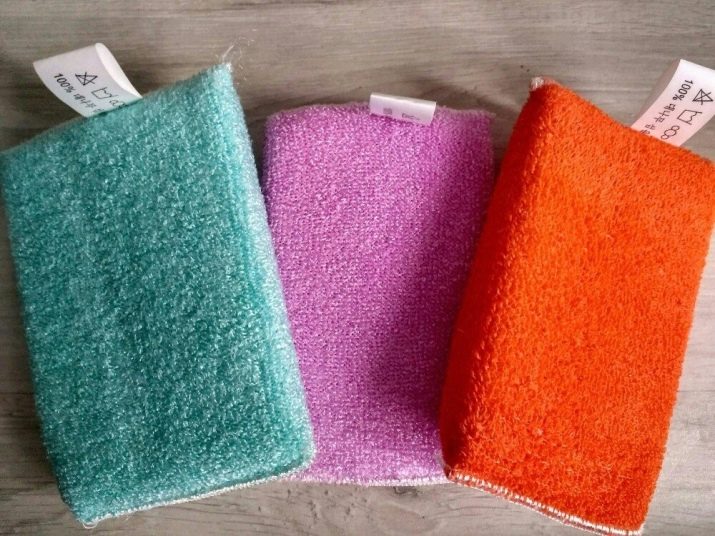
- Melamine (lanolin). This is the name of a sponge made on the basis of melamine resins. Such products are not suitable for crockery, because when using them, particles harmful to human health flake off. A white sponge can be used to clean the outside of pans, pots, tiles, refrigerator, microwave oven, sink.

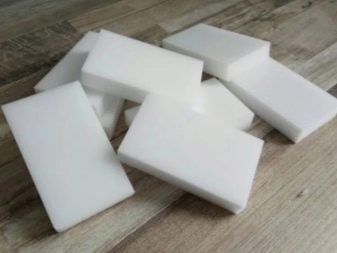
You can find silicone sponges on sale. They repel greasy dirt, do not absorb dirt, so they retain a presentable appearance for a long time.
They can be safely used for cleaning delicate surfaces: sponges will not leave scratches, scuffs or other marks.
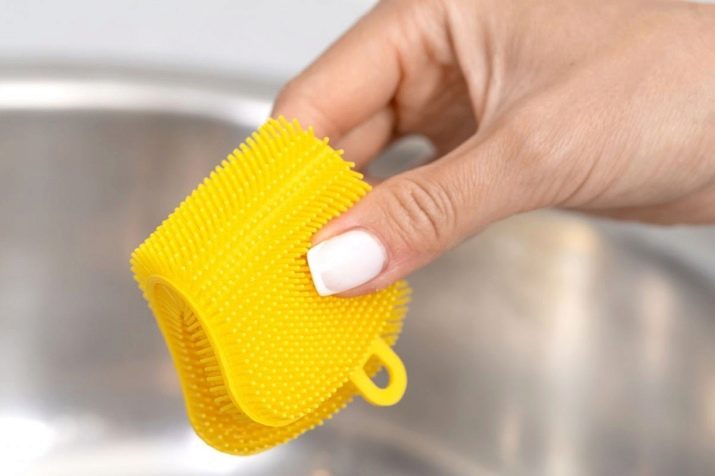
By shape and size
Most types of sponges are adjusted to the average size of a person's hand so that the product is comfortable to use. However, there are also large cleaning accessories with lengths and widths of 15 and 10 cm, respectively.
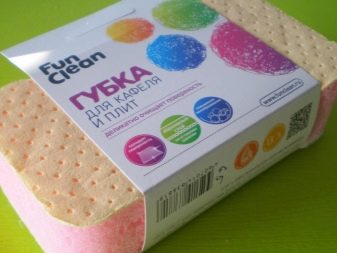
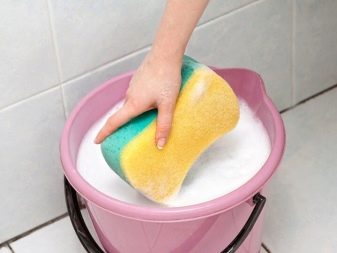
Most of the sponges are rectangular in shape, some of them have protrusions that are convenient to hold during cleaning or when washing dishes.
They are easy to use as they do not slip out of your hands.
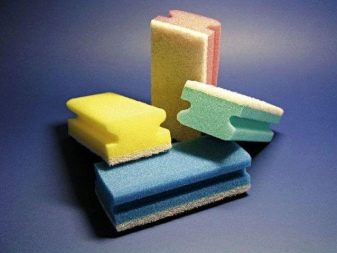

The most common sponge shapes are rectangular. Less common are square, round and oval cleaning accessories.
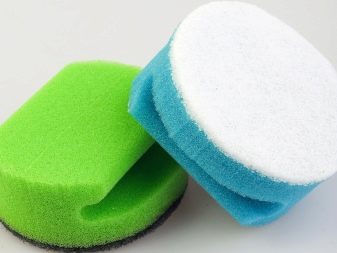
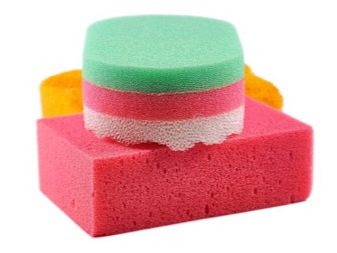
On sale you can find sponges with a holder - a special handle, which is convenient to hold when washing dishes. By using these accessories, your hands will not come into contact with the detergent and detergent.
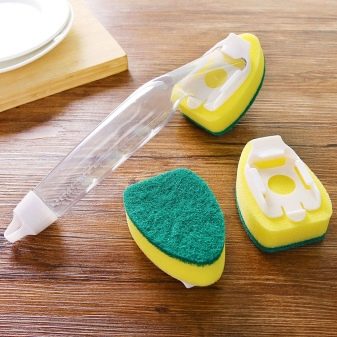
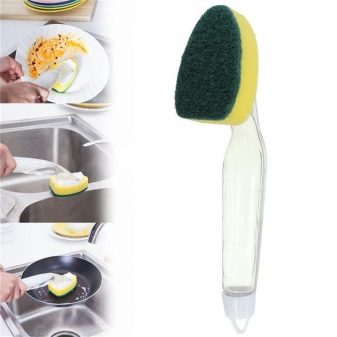
By appointment
Sponges can be designed for different types of cleaning.
-
For cleaning surfaces. Such accessories have a rigid base, due to which they can cope with dried and old dirt, carbon deposits. Do not use any scouring sponge on delicate surfaces.
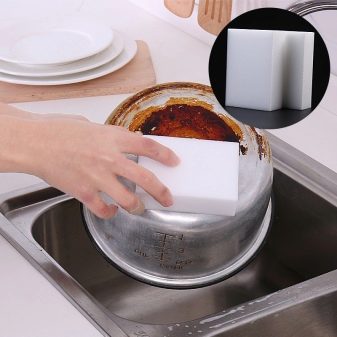
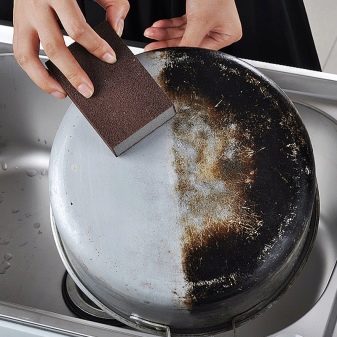
- For removing epoxy grout.
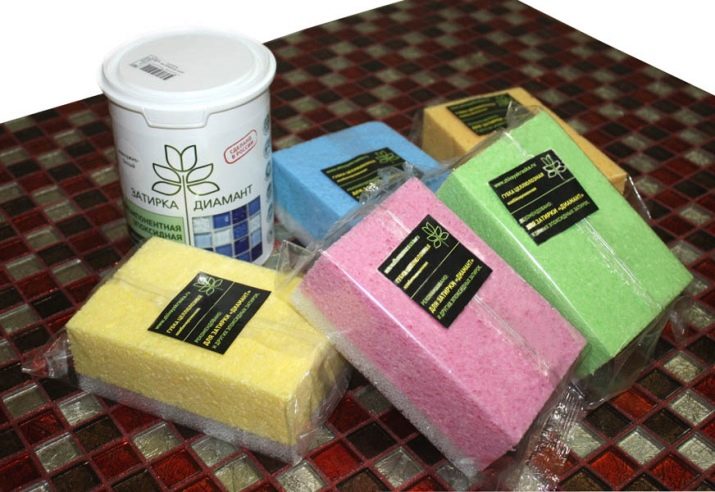
- For washing dishes and kitchen utensils.

- For plumbing maintenance: taps, sinks, bathroom.
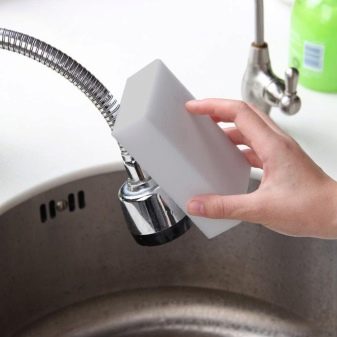

The range of household sponges is huge, which makes it difficult for an ordinary consumer to make the right choice.
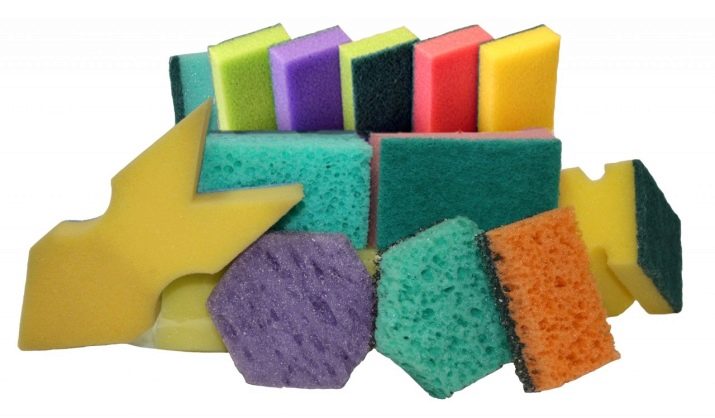
How to choose
You can buy sponges at any hardware store. The cost of cleaning supplies depends on several factors: brand, type of washcloth and the number of products in the package.
If your budget is tight, you can buy foam sponges - this is the cheapest option.
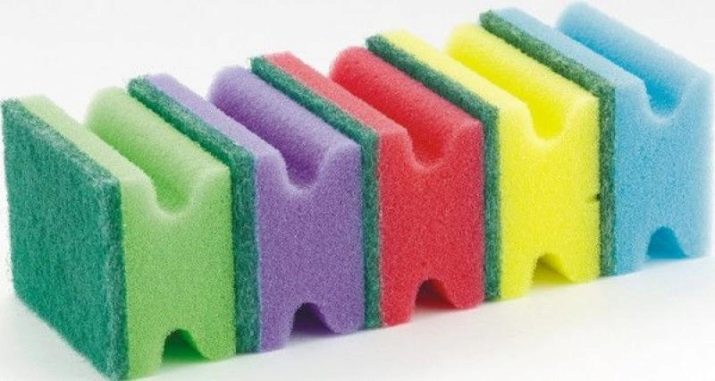
When choosing a good washcloth, you need to heed a number of recommendations:
- you need to give preference to the products of well-known companies - it is better to overpay for a brand than to buy a low-quality handicraft product;
- high quality products are evenly colored, they do not emit an unpleasant odor - the choice must be made in favor of such products;
- for people with sensitive skin or those suffering from allergies, it is best to look at products made from natural raw materials (for example, metal and bamboo scouring pads are suitable for them);
- before buying a sponge, you need to hold it in your hand and evaluate its convenience, optimal size.
When cleaning a room, you often have to solve several tasks: washing dishes, dealing with carbon deposits, removing old stains. One type of sponge often fails to do this work, so it is best to purchase several types of accessories, for example, for washing and cleaning.
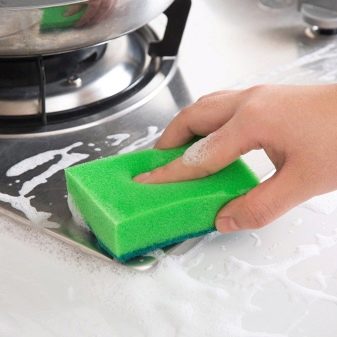

How to care for a sponge
The sponge must be changed in a timely manner, otherwise various bacteria will begin to accumulate and multiply on it: this will lead to an unpleasant odor. You need to change the dish sponge once every 1-3 weeks.
The frequency of replacement directly depends on the intensity of use of the accessory and on the correct care.
In order for the sponge to retain its original appearance as long as possible, a number of rules must be followed:
- use washcloths for their intended purpose, that is, for dishes - washing, for stoves and sinks - cleaning;
- after each use, the sponge must be washed and dried (preferably suspended or on special holders);
- do not boil or pour boiling water over washcloths for the purpose of disinfection (only a jute sponge can withstand high temperatures).
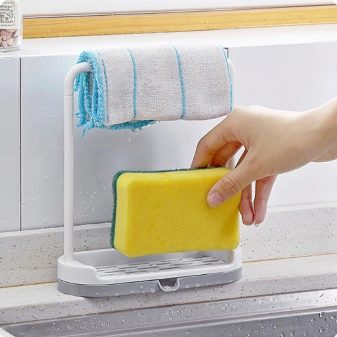
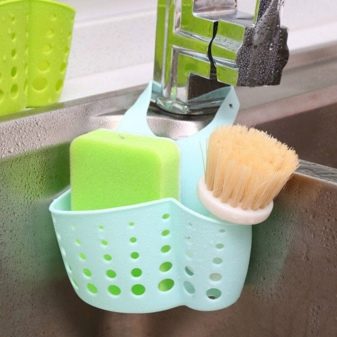
The washcloth should be sterilized once or twice a week. It can be disinfected in the microwave (with the exception of metal products): for this, the sponge is washed, rinsed, abundantly moistened and sent to the microwave oven for 1-1.5 minutes.
This method is dangerous: at high power of the equipment, the sponge can melt or even catch fire.
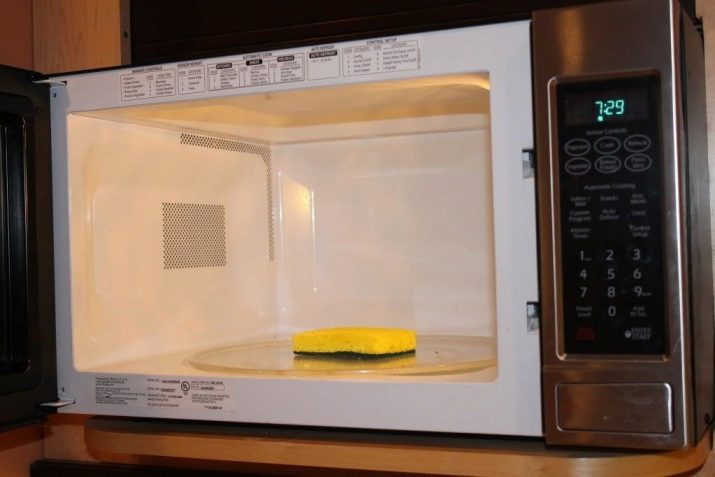
Sterilization with vinegar is considered more gentle. For disinfection, you need to leave the sponge in 9% vinegar for 5 minutes, then rinse well and dry.
By following these guidelines, you can extend the life of your cleaning accessories and keep them clean.









